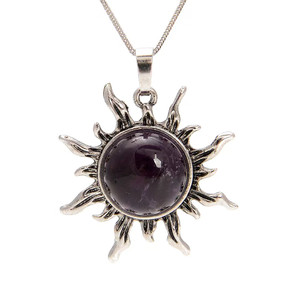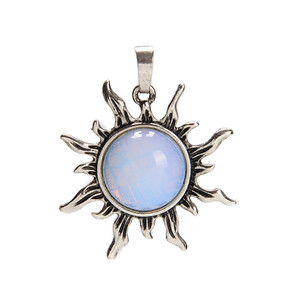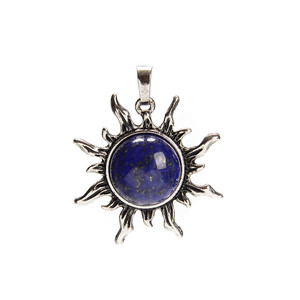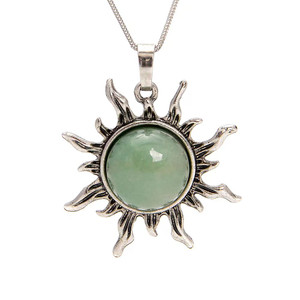
Magnesite, Dyed, Sun Shape, One Pendant, 38x34mm
Magnesite, Dyed, Sun Shape, One Pendant in a Metal Alloy Finding, 38x34mm
Magnesite is named for its principal component of magnesium and it is in the calcite group of minerals. Natural Magnesite is usually chalky white, but can also be found in gray, brown, yellow, orange, and pale pink and transparent, which is very rare. The natural luster of Magnesite is dull with a matte surface. When cut and polished into beads, it features a dark thread of veins or a web-like matrix across its surface, making it an attractive stone to use.
However, this is a porous stone that can be easily dyed to create bold and vibrant colors. It is often dyed to a turquoise color, because with its dark veining, it very closely resembles Turquoise. Unfortunately, some have passed off dyed Magnesite as Turquoise. Many times, it is difficult to tell the difference. The best thing is to know and trust your vendors. Magnesite and Turquoise have a difference in their hardness and Turquoise is harder. Also, if the price is too low, then it may not be turquoise. You can also look for color inconsistencies where the dye has collected in the natural cracks of the stone.
Magnesite is mined from many sources across the United States, Europe, Africa, Brazil, Australia, and China.
Hardness 3.5–5
This stone that has been dyed and it's cutting, drilling, and polishing done in China.
These pendants dyed with the introduction of coloring agent into a gemstone to give it new color, intensify present color or improve color uniformity.
Metal Alloy is a metal made by combining two or more metallic elements, base metals, to give greater strength or resistance to corrosion. In mining and economics, base metals refer to industrial non-ferrous metals excluding precious metals, like silver, gold, and platinum. Base Metals include copper, aluminum, nickel, tin, zinc antimony, bismuth, lead and many more. Metal Alloy, also known as Pewter and is usually a tin based alloy 85-95% of the time but could also be zinc based.
In December of 1994, The US Safe Drinking Water Act defined Lead-free as having less than 0.25% lead content. Most newly made solid pewter on the market today is considered lead free by these standards. But it is still recommended to not give children Metal Alloy jewelry if there is any chance, they will put it in their mouths!







